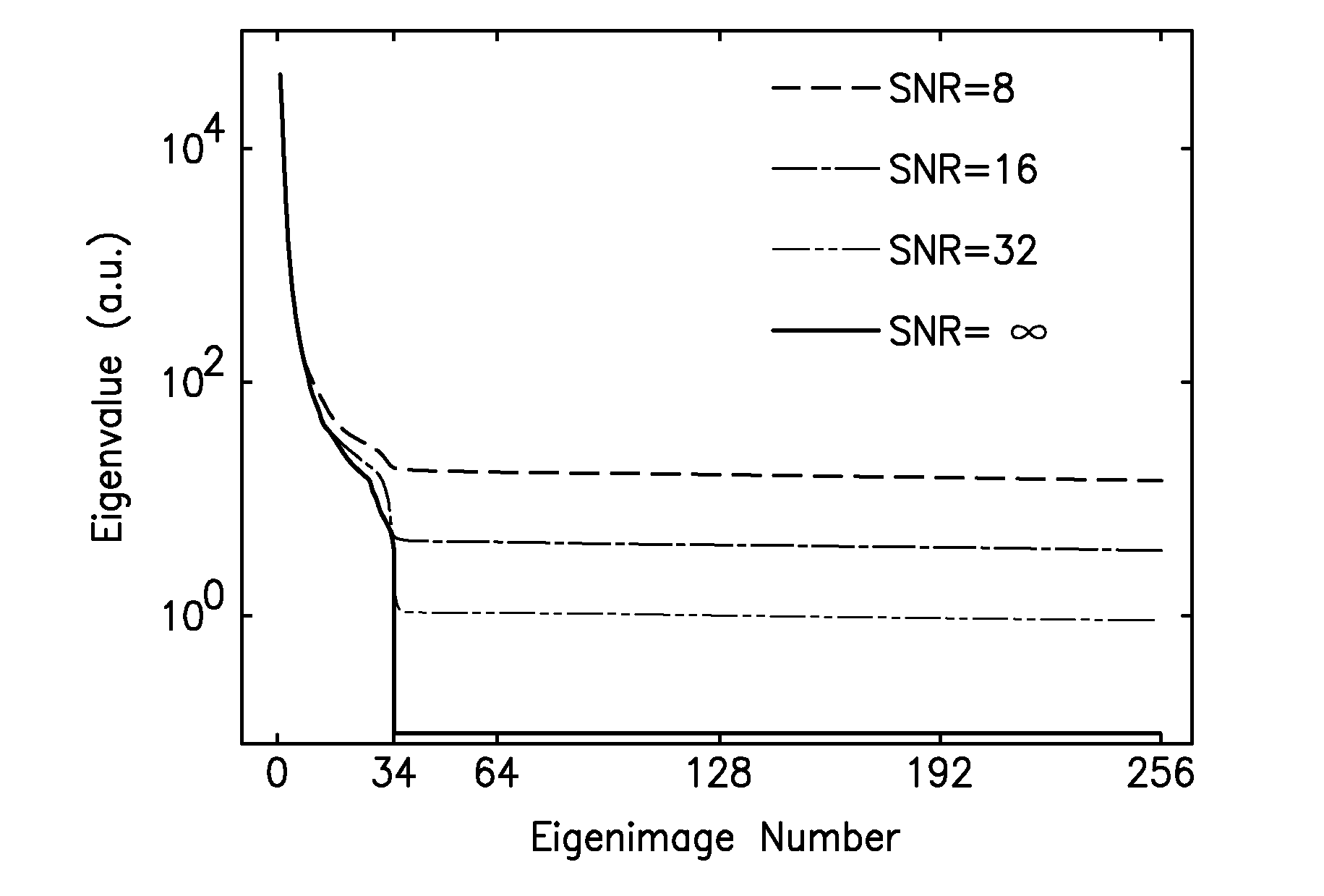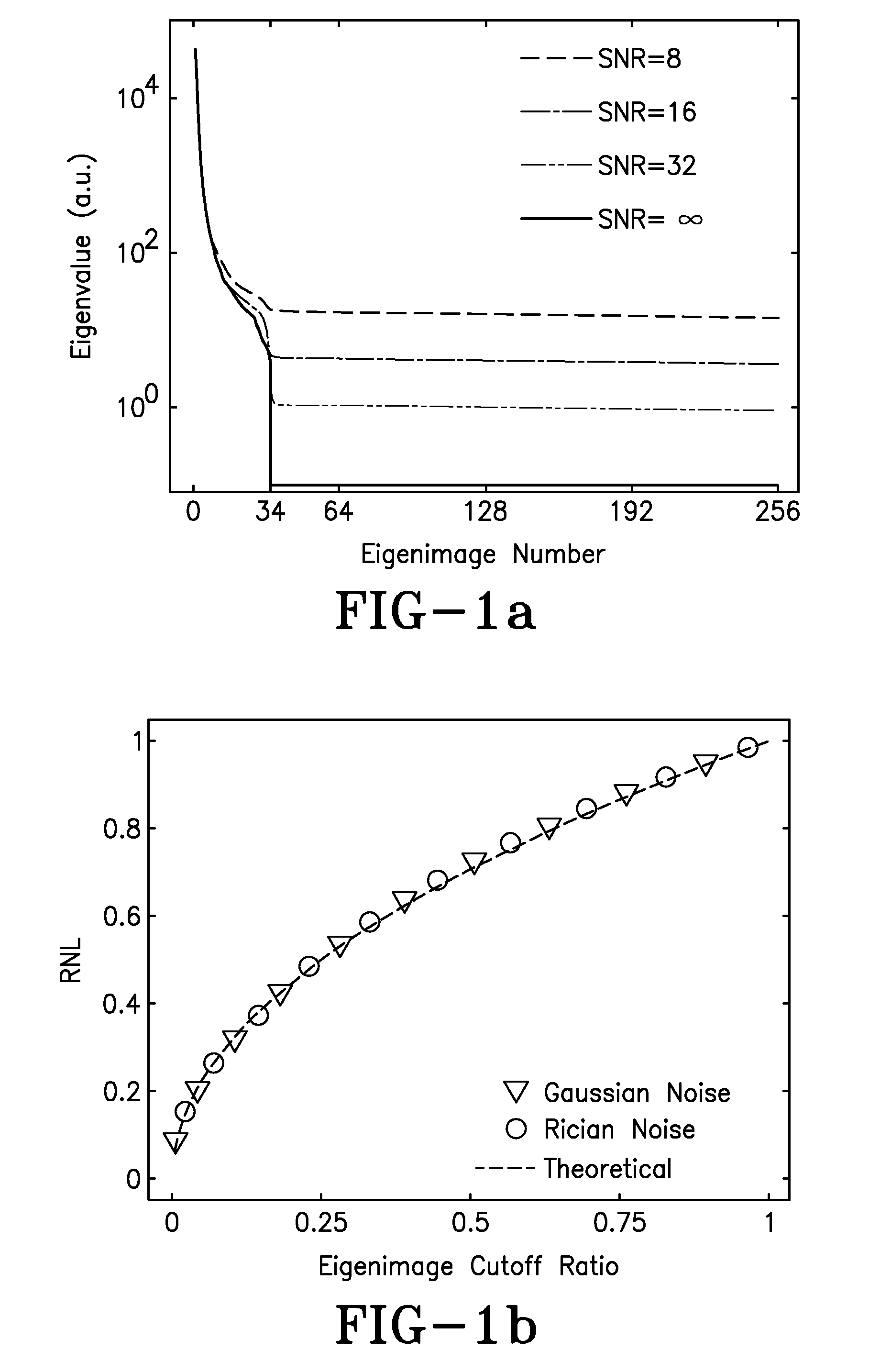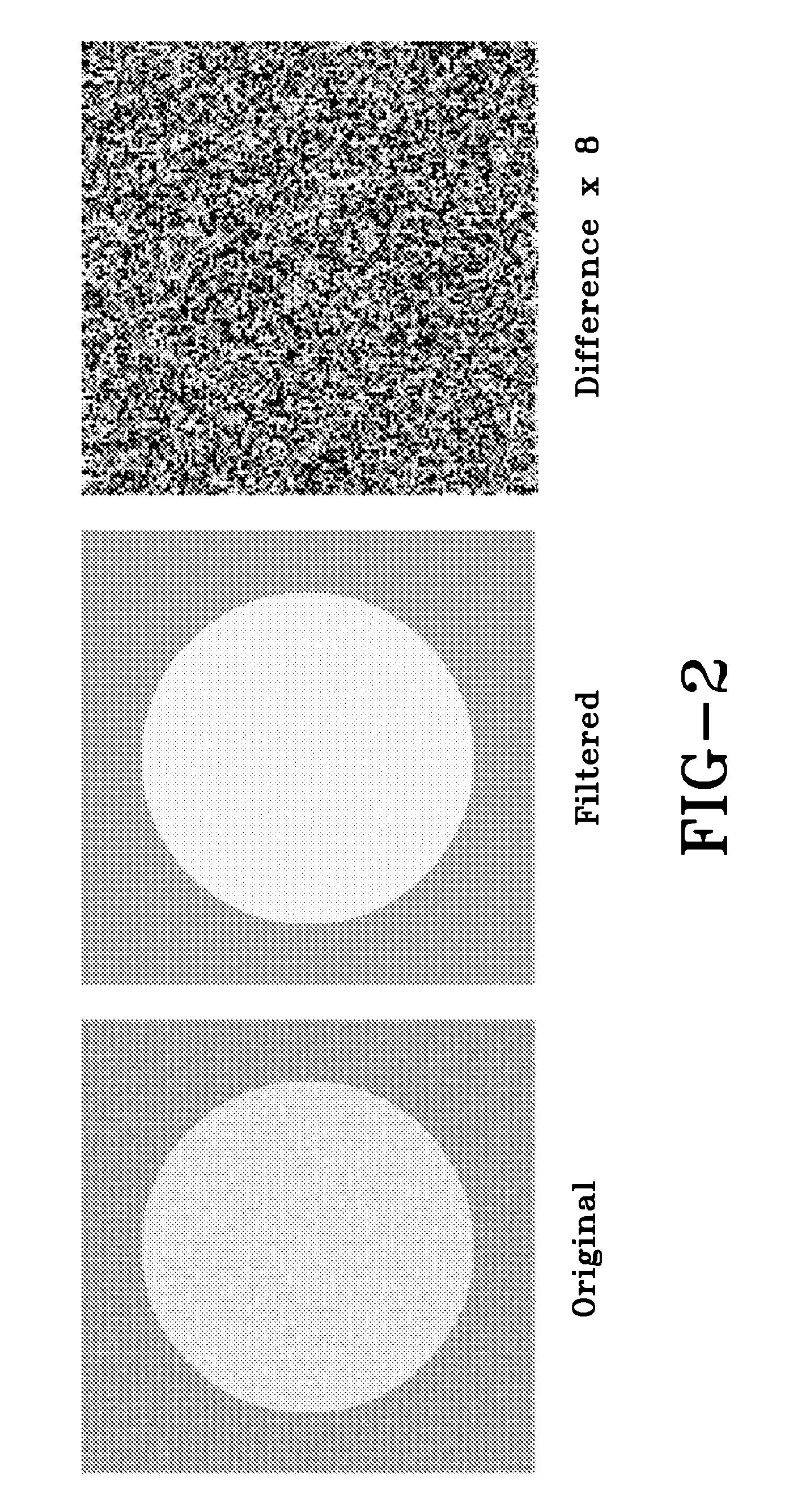System and method for improved real-time cine imaging
a real-time cine imaging and system technology, applied in image enhancement, image analysis, instruments, etc., can solve the problems of insufficient attention to the details of klt image filter design, limited image of the heart, and inability to address the design details of klt image filter, so as to reduce noise, increase redundancy, and reduce redundancy.
- Summary
- Abstract
- Description
- Claims
- Application Information
AI Technical Summary
Benefits of technology
Problems solved by technology
Method used
Image
Examples
Embodiment Construction
)
[0031]A temporal series of p two-dimensional images, each with N pixels, can be represented as the matrix {Ai}, where i=1, . . . , p. Each Ai represents a 1-D, N-point vector containing all of the pixel values for a single image. The mean is subtracted from each Ai, and the KLT proceeds as follows.
[0032]LetmatrixA(dimensionA=[A1A2⋮Ap],(1)
[0033]Its corresponding p×p co-variance matrix C is
C=AAH / (N−1) (2)
[0034]where AH is conjugate transpose of A.
[0035]C has p distinct eigenvalues λ1>λ2> . . . >λp, with corresponding eigenvectors v1, v2, . . . , vp. A p×p matrix E can be constructed using p eigenvectors derived from C as rows:
[0036]E=[v1v2⋮vp].(3)
[0037]Note that E is a unitary matrix, and E1=ET.
[0038]The p×N-point dynamic data sets {Ai} may be transformed by E to another p×N-point data sets {Bi} represented by the p×N matrix B:
[0039]B=[B1B2⋮Bp],(4)
[0040]where,
B=E·A (5)
[0041]The matrix E is the Karhunen-Loeve Transform for A. Unlike {Ai}, every N-point data set in {Bi} is o...
PUM
 Login to View More
Login to View More Abstract
Description
Claims
Application Information
 Login to View More
Login to View More - R&D
- Intellectual Property
- Life Sciences
- Materials
- Tech Scout
- Unparalleled Data Quality
- Higher Quality Content
- 60% Fewer Hallucinations
Browse by: Latest US Patents, China's latest patents, Technical Efficacy Thesaurus, Application Domain, Technology Topic, Popular Technical Reports.
© 2025 PatSnap. All rights reserved.Legal|Privacy policy|Modern Slavery Act Transparency Statement|Sitemap|About US| Contact US: help@patsnap.com



